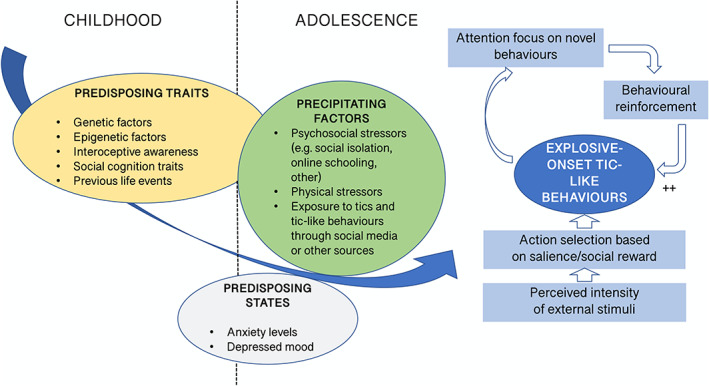FIG 1.

Possible pathophysiological mechanisms for the functional tic‐like behaviors (FTLBs) exhibited by this group of patients. As recently proposed in the context of FTLBs, 19 a combination of predisposing traits (encompassing, among others, genetic and epigenetic factors and previous life events), predisposing states (eg, raised anxiety levels and related low mood), and environmental precipitating factors (increase in media exposure to tic‐like behaviors, different stressors driven by the pandemic) may prompt an excess of behavioral alterations, such as recurrent tic‐like behaviors. In specific groups of people like those whom this viewpoint is focusing on, the environment might be providing the individual with overabundant external stimuli that may be discerned as highly salient (ie, attractive and “popular” tics or tic‐like behaviors). Such behaviors will be selected and reinforced, and the individual will, particularly at an initial learning stage, allocate an excess of attention to them, thereby enhancing their probability of recurrence reinforcement. [Color figure can be viewed at wileyonlinelibrary.com]
